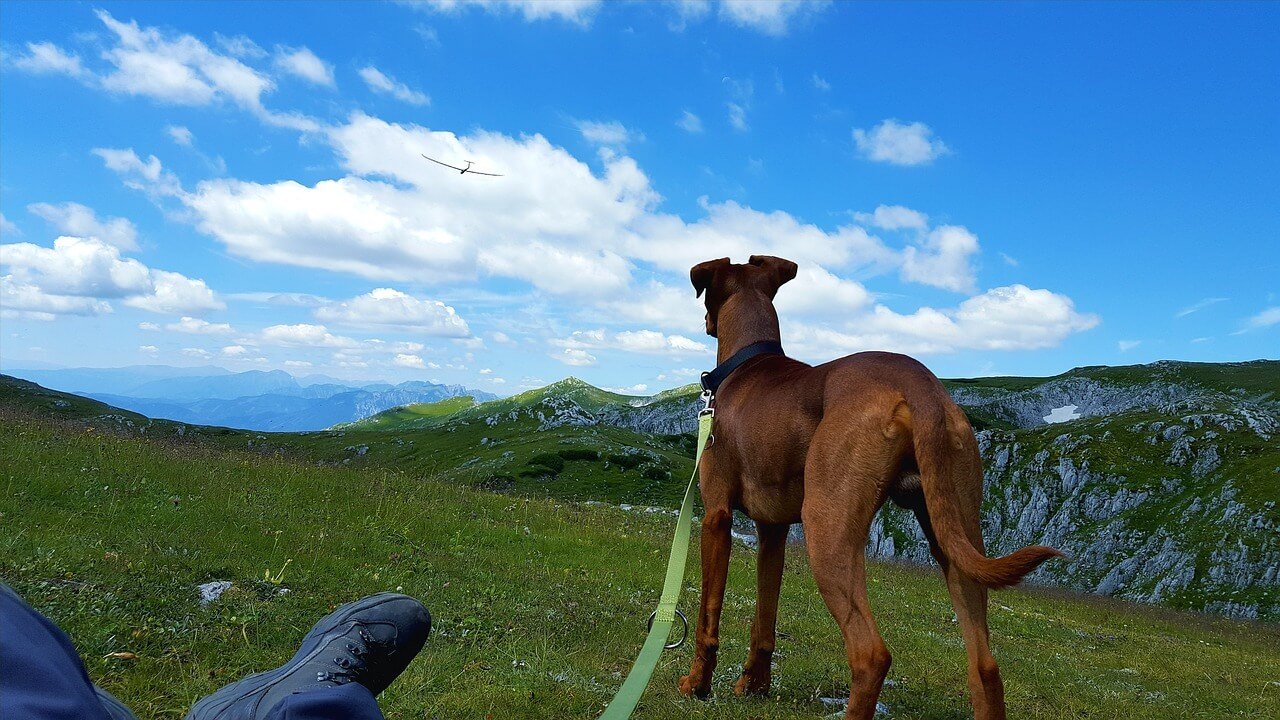Why Do Dogs Have Tails?
Dogs are known for their wagging tails, a feature that seems to be as natural to them as barking or fetching. But have you ever wondered why dogs have tails in the first place? While it might seem like just another adorable trait, a dog’s tail serves several important purposes beyond simply looking cute. From communication to balance and even health indicators, a dog’s tail plays a vital role in their daily lives. In this blog post, we’ll explore the fascinating reasons behind why dogs have tails, shedding light on their evolutionary significance and practical functions.
The Role of a Dog’s Tail in Communication
One of the most prominent functions of a dog’s tail is its role in communication. Dogs use their tails to express emotions, intentions, and social cues, making it an essential tool for interacting with humans and other animals.
Expressing Happiness:
A wagging tail often signals joy, excitement, or friendliness, especially when paired with relaxed body language.Signaling Fear or Anxiety:
A tucked tail indicates fear, submission, or discomfort, helping others recognize when a dog feels threatened.Asserting Dominance:
A high, stiff tail can convey confidence or dominance, often seen in dogs establishing their position within a group.Indicating Curiosity:
A slow, deliberate wag or a neutral tail position may suggest curiosity or alertness as the dog explores its surroundings.Facilitating Social Interactions:
Dogs rely on tail movements to communicate with other dogs during play, greetings, or territorial encounters.
Through these subtle yet powerful signals, a dog’s tail acts as a universal language, bridging gaps between species and fostering understanding.

How a Dog’s Tail Aids in Balance and Movement
Beyond communication, a dog’s tail plays a crucial role in maintaining balance and aiding movement, particularly during physical activities. This function is especially important for active breeds that engage in running, jumping, or quick turns.
Stabilizing During Turns:
A dog uses its tail as a counterbalance when making sharp turns while running, ensuring stability and precision.Assisting with Swimming:
Many water-loving breeds, such as retrievers, use their tails as rudders to steer and maintain direction while swimming.Enhancing Agility:
During obstacle courses or playful chases, a dog’s tail helps them stay agile and coordinated, preventing falls or missteps.Supporting Climbing:
Some dogs use their tails for additional support when navigating uneven terrain or climbing steep surfaces.Balancing Narrow Spaces:
When walking along narrow paths or ledges, a dog’s tail helps them maintain equilibrium and avoid tipping over.
These physical benefits highlight how a dog’s tail is not just an accessory but a functional tool that enhances their athleticism and adaptability.
Check this guide 👉Dog Tail Bleeding: Best 7 Health Tips!
Check this guide 👉What Does a Broken Dog Tail Look Like? Best 7 Expert Tips!
Check this guide 👉Understanding Dog Tail Injuries: Best 7 Health Tips!
Functions of a Dog’s Tail | Examples of Breeds That Use It Effectively |
|---|---|
Communication | Labrador Retriever, German Shepherd |
Balance during physical activities | Greyhound, Border Collie |
Swimming assistance | Golden Retriever, Newfoundland |
Social interaction | Beagle, Bulldog |
Emotional expression | Poodle, Cavalier King Charles Spaniel |
Health Indicators Linked to a Dog’s Tail
A dog’s tail isn’t just about movement or communication—it can also serve as a valuable indicator of their overall health and well-being. Observing changes in tail behavior can help identify potential issues early on.
Signs of Pain or Injury:
A limp or tucked tail may indicate pain, injury, or discomfort, requiring prompt veterinary attention.Tail Chasing as a Behavioral Issue:
Excessive tail chasing could signal boredom, anxiety, or even underlying medical conditions like allergies.Symptoms of Happy Tail Syndrome:
Active dogs may develop “happy tail syndrome,” where vigorous wagging causes cuts or abrasions on the tail.Paralysis or Weakness:
Sudden inability to move the tail could point to trauma, nerve damage, or a condition known as “limber tail.”Changes in Wagging Patterns:
Altered wagging frequency or style might reflect stress, illness, or shifts in mood that warrant further investigation.
Monitoring your dog’s tail behavior provides valuable insights into their physical and emotional state, ensuring timely care and intervention.
Unique Tail Characteristics Across Breeds
Not all dog tails are created equal—different breeds exhibit unique tail shapes, sizes, and functions tailored to their specific needs and traits. Understanding these variations adds depth to our appreciation of canine diversity.
Corkscrew Tails:
Breeds like the Pug and Bulldog have distinctive corkscrew tails, which are charming but prone to skin infections due to their shape.Long, Feathered Tails:
Afghan Hounds and Shiba Inus sport long, elegant tails that enhance their graceful appearance and aid in balance.Bobbed or Docked Tails:
Some working breeds, such as Boxers and Rottweilers, traditionally have shorter tails, either naturally or through docking practices.Curly Tails:
Basenjis and certain sled dog breeds feature tightly curled tails, which help conserve heat during cold weather.Saber-Shaped Tails:
Siberian Huskies and Alaskan Malamutes boast saber-shaped tails that curve over their backs, offering warmth and protection.
These breed-specific tail traits reflect both evolutionary adaptations and aesthetic preferences, showcasing the incredible variety within the canine world.
The Evolutionary History of Dog Tails
The evolution of dog tails is a fascinating journey that mirrors their adaptation to various environments and roles throughout history. These changes reveal how dogs have developed specialized traits to thrive alongside humans.
Origins in Wolves:
Early domesticated dogs inherited their tail structure from wolves, using them primarily for balance and pack communication.Selective Breeding Influences:
Humans selectively bred dogs for specific tasks, influencing tail shapes to suit hunting, herding, or guarding duties.Adaptation to Climate:
Northern breeds evolved curly tails to protect their noses from harsh winds, while tropical breeds developed sleeker tails for agility.Role in Domestication:
As dogs became companions rather than hunters, their tails increasingly served as tools for bonding with humans.Modern Variations:
Today’s diverse breeds showcase a wide range of tail types, each reflecting centuries of genetic refinement and purpose-driven breeding.
Understanding this evolutionary history highlights the intricate relationship between form and function in dog tails.
Myths and Misconceptions About Dog Tails
Despite their importance, dog tails are often misunderstood, leading to myths that can cloud our perception of their true purpose. Dispelling these misconceptions helps us better appreciate their value.
Myth: A Wagging Tail Always Means Happiness:
While wagging often signals joy, context matters—dogs may also wag their tails out of nervousness or uncertainty.Myth: Tail Docking Has No Negative Effects:
Docking can impact a dog’s ability to communicate and may cause chronic pain or discomfort.Myth: All Dogs Need Long Tails for Balance:
Short-tailed breeds compensate for balance through other physical adaptations, proving functionality isn’t solely dependent on length.Myth: Tails Are Only for Looks:
Beyond aesthetics, tails play critical roles in movement, communication, and health monitoring.Myth: Puppies Are Born With Fully Developed Tails:
Puppy tails continue developing after birth, reaching full size and functionality as they mature.
Clarifying these myths fosters a more accurate understanding of the complexities surrounding dog tails.
Fun Facts About Dog Tails
Dog tails are full of surprises, offering delightful insights into their quirks and capabilities. Here are some fun facts that celebrate the uniqueness of this beloved feature.
Fastest Tail Wags:
Some small breeds, like Chihuahuas, can wag their tails up to 350 times per minute during moments of extreme excitement.Tail-Spinning Behavior:
Certain herding breeds, like Border Collies, perform a “tail-spin” maneuver to direct livestock efficiently.Tail Length Records:
The longest recorded dog tail belongs to a Great Dane named Zeus, measuring over 4 feet in length.Tailless Breeds Exist Naturally:
Australian Stumpy Tail Cattle Dogs are born without tails due to a genetic mutation, making them distinct from docked breeds.Tails Can Smell Emotions:
A recent study suggests that dogs can detect emotional states based on the scent emitted from another dog’s anal glands, located near the base of the tail.
These fun facts remind us that a dog’s tail is not only functional but also endlessly intriguing.
Frequently Asked Questions About Dog Tails
Why do some dogs have curly tails?
Curly tails are often linked to specific breeds with ancient origins and may serve functional purposes like conserving heat.
Can a dog live without a tail?
Yes, dogs can adapt to life without a tail, though they may face challenges in communication and balance.
Do all dogs wag their tails when happy?
No, tail wagging can signify a range of emotions beyond happiness, including nervousness or alertness.
Is tail docking painful for dogs?
Yes, tail docking involves surgical removal and can cause pain and discomfort.
How can I tell what my dog’s tail movement means?
Observe the speed, direction, and context of the wag, as well as accompanying body language, to interpret your dog’s mood accurately.
Celebrating the Versatility of a Dog’s Tail
A dog’s tail is far more than a simple appendage—it’s a multifunctional tool that supports communication, balance, and overall well-being. Whether expressing joy, stabilizing during a sprint, or signaling a need for care, a dog’s tail plays an integral role in their daily lives. By appreciating the complexity and versatility of this remarkable feature, we gain a deeper connection to our canine companions and their unique ways of interacting with the world. So next time you see your dog wagging their tail, take a moment to marvel at the wonder of nature’s design.
Understanding Cryptosporidium in Cats: Best 7 Expert Tips! – Spot symptoms, treat safely, and stop parasite spread in your home.
Understanding Cryptosporidium in Dogs: Best 7 Expert Tips! – Learn symptoms, treatment & prevention for this stubborn gut parasite.
Understanding Syringomyelia in Cats: Best 7 Expert Tips! – Recognize signs, manage pain, and support your cat’s neurological health with vet-backed guidance.
Understanding Syringomyelia in Dogs: Best 7 Expert Tips! – Expert insights on symptoms, MRI diagnosis, pain management & quality of life.





